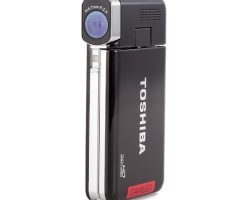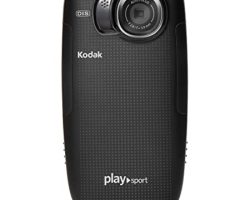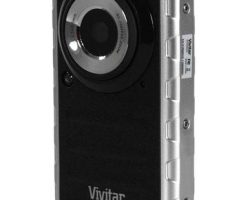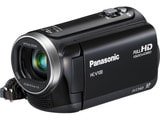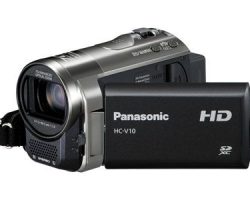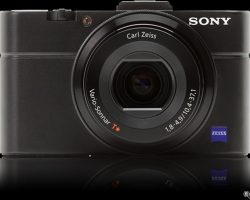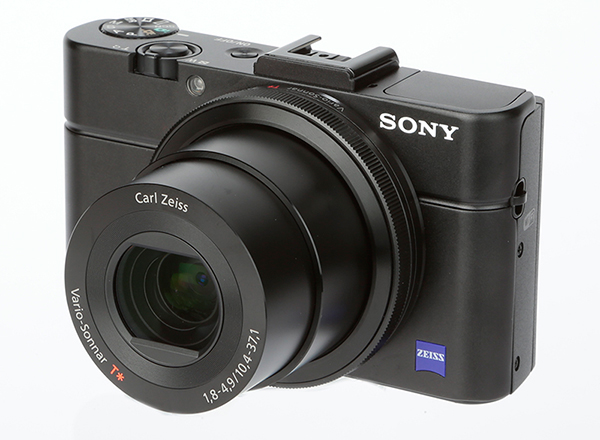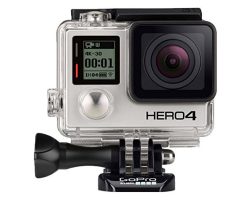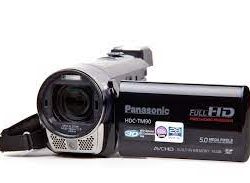
Panasonic HDC-TM90 Camcorder Review
The Panasonic HDC-TM90 is a high definition camcorder that records 1920 x 1080 video in the AVCHD format. It offers 16GB of built-in flash memory, a 3-inch touch-screen display and a 26x zoom lens. It is also capable of 3D video recording with an optional 3D converter lens.
Panasonic HDC-TM90 at a Glance
The Good: Excellent video quality, solid feature set, light and compact design.
The Bad: Small external controls, clumsy menu interface.
Panasonic HDC-TM90 Video Quality
The Panasonic TM90 records video at 1920 x 1080 at 60 progressive frames per second via a 3-megapixel CMOS sensor at a maximum bit rate of 28Mbps.
This high bit-rate setting is not actually supported by the AVCHD format that the TM90 records in, so your video editing options are fewer (at least for now) than they would be if you dialed back to the AVCHD-supported 24Mbps.
Nevertheless, the video quality on the Panasonic TM90 is very impressive. We’re talking about extremely crisp motion, well-saturated colors and nice even exposure. In low light, the results were equally impressive, with very little visible noise, especially vs. other camcorders in its price range. Panasonic said they revamped their noise reduction system for a number of 2011 camcorders and it definitely shows.
In addition to the high-quality 28Mbps mode, you can dial back to 17Mbps, 13Mbps, 9Mbps and 5Mbps. On the still photography side, you can snap 5-megapixel still photos. While it’s no replacement for a still camera, it has a flash and a dedicated photo shutter, so it delivers enough functionality to fill in on the fly.
Panasonic TM90 Optics
The TM90 packs a 26x optical zoom lens.
Your magnification can be boosted to 40x with Panasonic’s “Intelligent Zoom” which basically crops your video to produce a “zoom” look. The TM90 offers both optical and digital image stabilization to reduce jitters as you move about or use the zoom. I found it quite effective, particularly as you zoom out.
Another nice optical feature: the TM90 offers a 28mm wide angle lens for getting more of your scene in the frame.
Design
The design of the Panasonic HDC-TM90 is something of a mixed bag. On the plus side, it’s very light and compact at 1.99 x 2.48 x 4.67 inches and .54lbs without battery and memory card. It has a plastic exterior, which contributes to its light weight but also makes it feel a bit cheap. The overall design is sleek – with the battery lodged nearly flush with the back of the camcorder, so it’s quite easy to drop in purse or pocket.
The design negatives come when you flip open the camcorder’s LCD display to reveal a set of small buttons (Intelligent Auto/Manual, image stabilization, and 1080/60p mode) that are flush with the camcorder body and are difficult to engage.
Feature Set
The TM90 offers an “Intelligent Auto” mode for automatically setting exposure settings to maximize video quality based on your shooting environment. Advanced users will like the automatic control over iris, focus and shutter speed. There’s also a pre-record function which will record up to three seconds of video before you actually press “record.”
The TM90 is also able to record 3D video with the use of an optional 3D converter lens ($350). After you attach the converter, the camcorder will automatically detect it and set you into 3D mode, along with instructions for properly adjusting the lens for the most accurate recording. The resulting 3D video won’t be high definition and can’t be viewed in 3D on the camcorder’s LCD display. If you own a 3D TV and glasses, however, you can enjoy the full 3D experience when connecting the camcorder via HDMI cable.
Menu & Display
With a 3-inch touch screen display, the Panasonic TM90 has a bit more room to navigate around on-screen menu items. Unfortunately, a lot of the on-screen menu icons are a bit vague. You can use an info button (marked as an ‘i’ on the bottom of the menu) to get a brief written description, but the info mode shuts off after one use – you’ll have to constantly hit it to learn about a particular function, which can be frustrating.
The touch screen itself is quite responsive and the display rotates around so you can alternate your viewing angles.
Memory
The Panasonic TM90 packs 16GB worth of internal flash memory alongside a slot for an optional SDXC card. It offers relay recording – a useful feature which automatically switches recording from internal memory to a card (if one’s inserted) when internal memory fills up.
You can store roughly two hours and 20 minutes worth of the highest quality HD footage on the TM90’s built-in memory and much more than that (up to six hours) if you dial back the quality.
Panasonic HDC-TM90 Bottom Line
Some design quibbles aside, the TM90 is a terrific camcorder for the mid-range of the HD/AVCHD market. It delivers fantastic video quality with a well-rounded feature set and a terrific zoom lens. If you get the hankering to shoot 3D video, the TM90 can accommodate you, although we wouldn’t recommend it for its 3D features alone (better to buy a dedicated 3D camcorder with a pair of image sensors and lenses).


